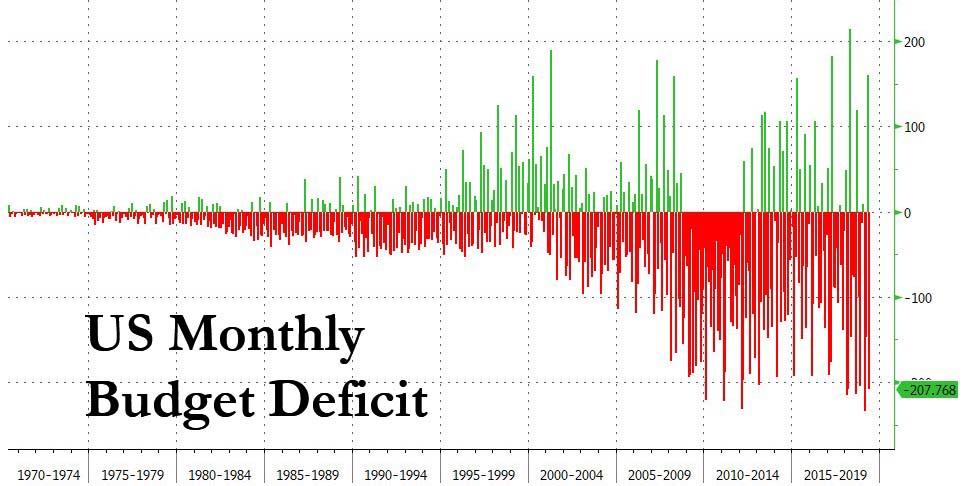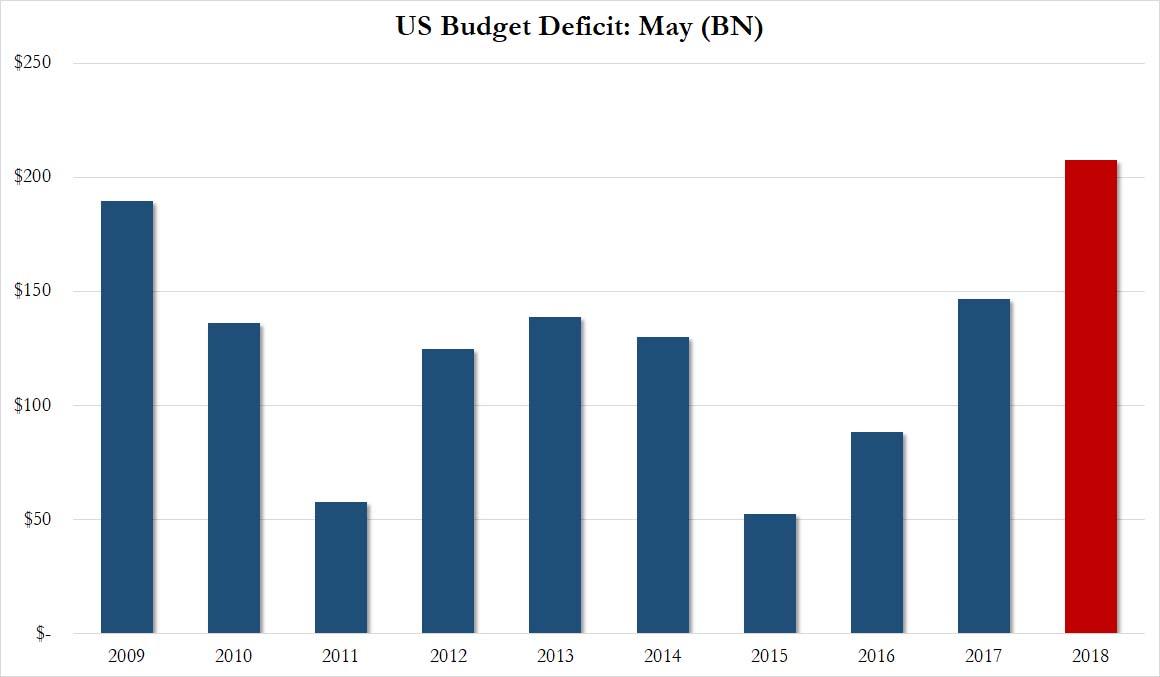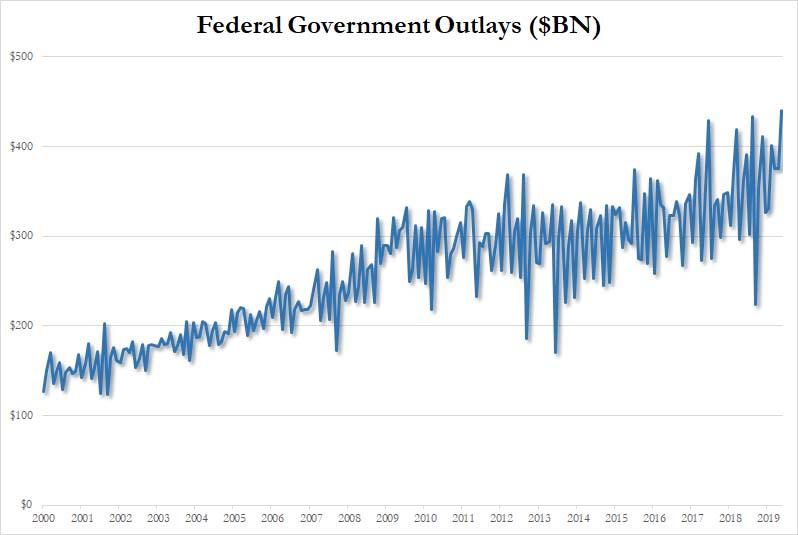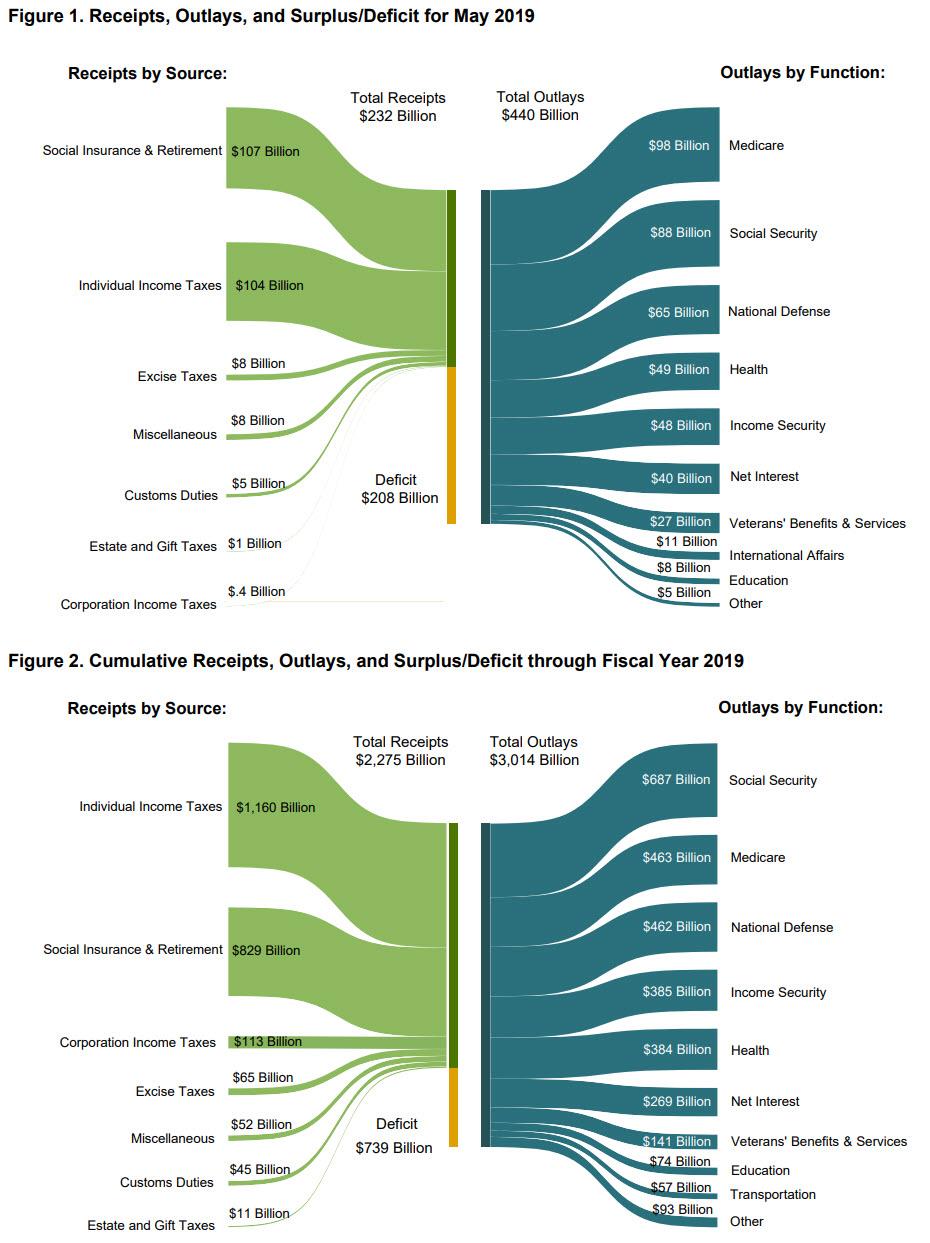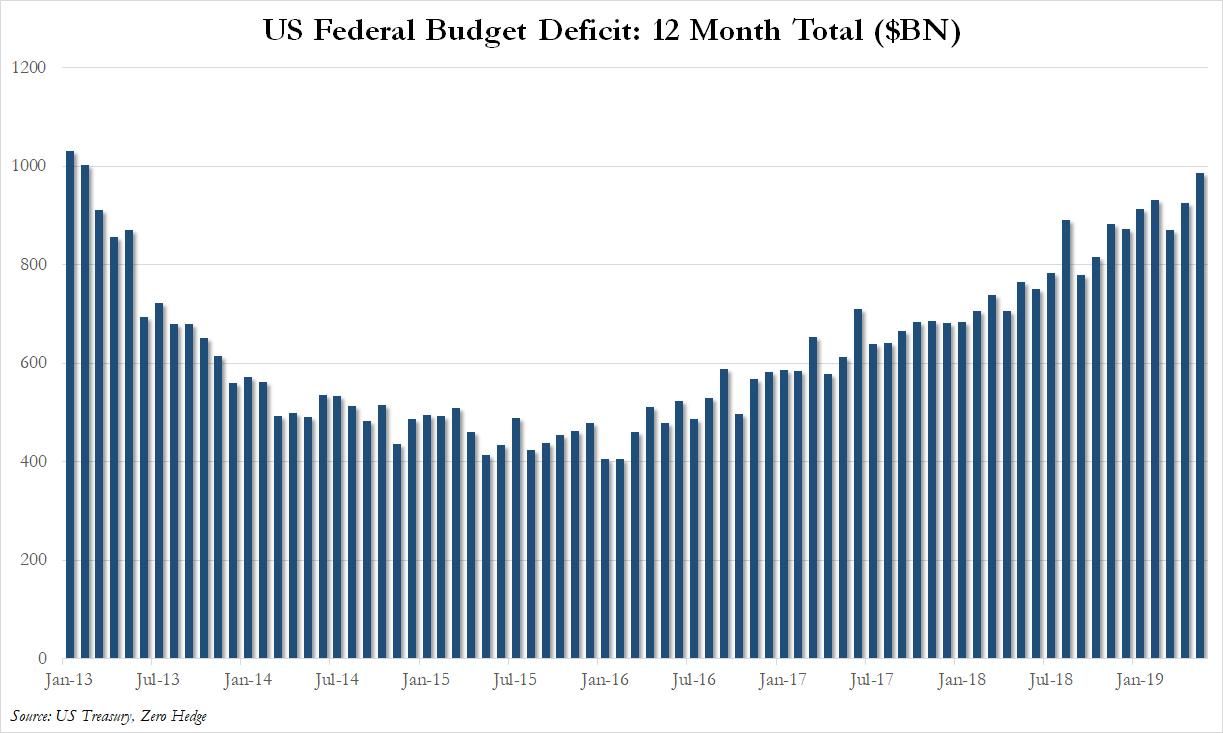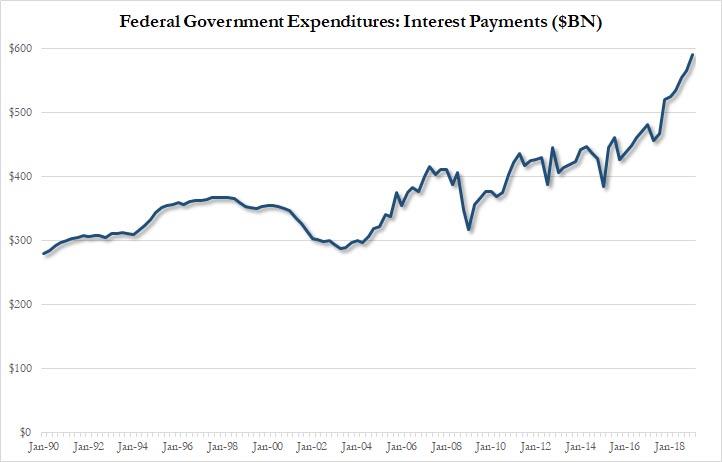Another month, another frightening jump in the US budget deficit. And this time with a record surge in government spending to boot.
According to the latest Treasury data, the US budget deficit in May – not a traditionally high-spending month for the US government – was a whopping $208 billion, missing the $200 billion deficit expected, and well worse than the $147 billion deficit recorded last May.
And even though there may have been one-time calendar effects and time-shifts at play, the deficit was also the biggest budget deficit for the month of May on record.
For May, receipts rose 6.9% y/y to $232.1.3BN but it was the surge in outlays that was jarring: last month, the US government spent a whopping $439.8BN, a 20.9% increase from prior year’s $363.9BN in outlays. This was the most the US government has ever spent in one month!
As a result, the budget deficit for the first eight months of the fiscal year shot up to $738.6 billion, a whopping 38.8% higher than the $532 billion reported for the same period last year, largely the result of soaring government spending, while receipts are starting to turn lower. As of May, year-to-date receipts were up 2.3%, while outlays rose 9.3%
The jump in the deficit was despite the bump in customs duties, which almost doubled to about $44.9 billion this fiscal year from $24.8 billion a year ago, reflecting the Trump administration’s tariffs on Chinese imports.
Meanwhile, on a trailing 12 month basis, the deficit rose again, hitting just shy of $1 trillion, or $958 billion, the highest since February 2013, when it was just above $1 trillion.
Unfortunately, since receipts are set to decline even more in the coming months, the overall budget deficit is set to widen further in the years to come as the Republican tax cut package and increased spending for defense and other priorities boost government outlays. Some policy makers and economists are flagging concern about the growing debt burden, saying it risks America’s credit quality among borrowers, while other economists see more room to run.
So far it has yet to dent the yield on US treasury debt, which recently tumbled to levels not seen in years, and certainly when the total US deficit was far lower.
According to the CBO, the budget deficit in fiscal 2019 will widen to $897 billion, up by $118 billion from a year earlier; any economic recession will result in a far greater number. Incidentally, for the first 8 months of the year, the US has already spent $739 billion, leaving just $160 billion in additional spending before the US surpasses the CBO’s deficit forecast.
Finally, and perhaps most concerning, is that for the first 8 months of this fiscal year, gross interest payments on US Treasury debt hit $354 billion, $46 billion, or 11% more than in the same month period last year. As a reminder, according to the Treasury’s conservative budget estimates, interest on the U.S. public debt is on track to reach a record $591 billion this fiscal year, more than the entire budget deficit in FY 2014 ($483 BN) or FY 2015 ($439 BN), and equates to almost 3% of estimated GDP, the highest percentage since 2011.
And since total debt, which recently surpassed $22 trillion having, and is only set to keep rising – once the latest pesky debt ceiling issue is resolved in a few months – expect interest on the debt to keep rising, especially if inflation comes back with a bang and the Fed reverts to its tightening trajectory, and hit $1 trillion per year as soon as 2021, making it one of the biggest spending categories, and on pace to surpass total US defense spending (roughly $950BN per year) in dollar terms in just two years.
via ZeroHedge News http://bit.ly/2F9m32O Tyler Durden
